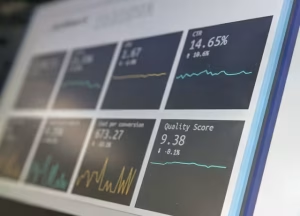Imagine this: your online store is thriving. Orders are coming in, and so are the reviews. Dozens, maybe hundreds, pour in every week. Tucked away inside that mountain of text is pure gold: honest feedback, product ideas, service complaints, and glowing praise. But you’re busy running a business. Who has the time to manually read every single comment, categorize it, and figure out the overall customer mood? You’re sitting on a treasure trove of data, but you don’t have the key to unlock it. This is a common problem for any growing e-commerce business. The good news is that a powerful key now exists, and it’s driven by artificial intelligence.
This article will serve as your guide to that key. We will provide a thorough walkthrough of what sentiment analysis is, how its underlying technology works, and most importantly, why it has become an absolutely critical tool for any modern business, especially those built on platforms like WooCommerce. It is time to stop guessing what your customers think and start knowing.
What is Sentiment Analysis? A Plain-English Definition

At its core, sentiment analysis is the automated process of understanding the emotional tone behind a piece of text. Think of it as teaching a computer to read for feeling, not just for words. It’s a field within Artificial Intelligence (AI) and Natural Language Processing (NLP)—which is the science of helping computers understand human language—that identifies and categorizes opinions expressed in text to determine if the writer’s attitude is positive, negative, or neutral. You might also hear this technology referred to by other names, such as opinion mining or emotion AI.
The goal is always the same: to take unstructured human language from reviews, social media posts, or customer support tickets and transform it into structured data that a business can act on.
Imagine you have a superhuman assistant. This assistant can read ten thousand product reviews in the time it takes you to drink your morning coffee. After reading, this assistant doesn’t just hand you a stack of paper. Instead, it gives you a concise report: “72% of customers feel positive about the new product, 18% feel negative, and 10% are neutral. The positive comments frequently mention ‘fast shipping,’ while the negative ones often cite ‘confusing instructions’.” That is precisely what sentiment analysis does for your business. It moves beyond simply collecting comments and starts providing you with genuine customer intelligence.
The value of a proper sentiment analysis strategy cannot be overstated in a competitive market. Implementing a sentiment analysis system allows a business to listen to the voice of its customer base at scale, a task that was once impossible without a massive team of human analysts. This form of text analysis is a foundational element of modern data driven decision making.
How Does Sentiment Analysis Work? The Technology Behind the Magic

While it may seem like magic, sentiment analysis operates on clear, logical principles. The process can generally be broken down into three main stages. Understanding these stages helps demystify the technology and appreciate its power. It is a sophisticated process, but the core ideas are straightforward.
First is Data Collection. Before any analysis can happen, the system needs text to analyze. This data is gathered from various sources where customers express their opinions. For an e-commerce store, this would include product reviews on your website, comments on your social media pages, responses to customer satisfaction surveys, and transcripts from customer support chats or calls. The more comprehensive the data collection, the more accurate the picture of customer sentiment will be.
Second is Text Pre-processing. Raw human language is messy. It is filled with typos, slang, abbreviations, and grammatical errors. Before a computer can understand it, the text needs to be cleaned up. This pre-processing phase involves several steps, such as correcting spelling mistakes, removing irrelevant information like URLs or special characters, and breaking down sentences into individual words or phrases, a process known as tokenization. This step is critical because the quality of the analysis is directly dependent on the quality of the input data. A good sentiment analysis system is robust enough to handle this “dirty” text and standardize it for evaluation.
The final and most complex stage is the Analysis itself. This is where the system applies algorithms to read the cleaned text and assign a sentiment score. There are two primary approaches to performing sentiment analysis:
- Rule-based Systems: This approach relies on manually created rules and dictionaries, or lexicons. A lexicon is essentially a massive list of words, where each word is assigned a polarity score. For example, “excellent” might be +1, “amazing” +0.9, “okay” 0, “bad” -0.8, and “terrible” -1. The system scans the text, adds up the scores of the words it finds, and determines the overall sentiment. Rule-based systems are straightforward to understand but can be brittle. They struggle with complex sentences and can miss the nuance of how words are used in different contexts. A great deal of human effort is also required to create and maintain the lexicons.
- Automatic Systems (Machine Learning): This is the more modern and powerful approach. Instead of being programmed with explicit rules, a machine learning model is trained on a huge dataset of text that has already been labeled by humans as positive, negative, or neutral. By processing millions of examples, the model learns the patterns, word associations, and nuances that indicate a particular sentiment. Popular algorithms used for this type of sentiment analysis include Naïve Bayes, Support Vector Machines (SVM), and more advanced deep learning models. These systems are far more accurate and can understand context much better than rule-based systems. A well-trained machine learning sentiment analysis model can achieve very high levels of accuracy.
Many of the most advanced platforms today use a hybrid system, which combines the predictable nature of rule-based approaches with the intelligent flexibility of machine learning. This combination often yields the most accurate and nuanced results for sentiment analysis.
The Different “Flavors” of Sentiment Analysis

Not all sentiment analysis is the same. Just as there are different ways to ask a question, there are different levels of depth to analyzing the answer. Understanding these different types, or “flavors,” is key to choosing the right approach for your business needs. Moving beyond a simple positive or negative label unlocks a much richer understanding of customer feedback.
- Fine-Grained Sentiment Analysis: This approach expands the basic categories of positive, neutral, and negative. Instead of a simple thumbs up or thumbs down, it assigns sentiment on a more detailed scale. For example, it might use a five-point scale: Very Positive, Positive, Neutral, Negative, and Very Negative. This is incredibly useful for prioritizing feedback. A “Very Negative” review about a product flaw requires more immediate attention than a mildly “Negative” review about a minor shipping delay. This level of detail in sentiment analysis allows businesses to triage customer issues more effectively.
- Aspect-Based Sentiment Analysis (ABSA): This is arguably the most valuable type of sentiment analysis for any e-commerce business. Aspect-based sentiment analysis does not just look at the overall feeling of a review; it identifies the sentiment related to specific features or aspects of a product or service. Consider this review for a laptop: “The screen is brilliant and the keyboard is a joy to type on, but the battery life is awful and it gets too hot.” A basic sentiment analysis might score this review as neutral or mixed. However, ABSA breaks it down:
- Screen: Positive
- Keyboard: Positive
- Battery Life: Negative
- Temperature: NegativeThis detailed insight is pure gold for product developers and marketers. It tells you exactly what to celebrate in your marketing materials (“Brilliant screen and a joy to type on!”) and exactly what your engineering team needs to fix in the next product iteration. Aspect-based sentiment analysis turns vague feedback into a concrete to-do list for improvement.
- Emotion Detection: This type of analysis goes even further than polarity. It aims to identify specific human emotions within the text, such as happiness, anger, sadness, frustration, or excitement. For customer service, this is a game changer. An automated system that detects a customer’s frustration in a support chat can automatically escalate the ticket to a senior agent or flag it for immediate follow up. Detecting excitement or happiness can identify your most enthusiastic customers, who can then be invited to join a loyalty program or become brand ambassadors. Emotion detection provides a more human layer to the data from your sentiment analysis.
- Intent Analysis: Intent analysis focuses on figuring out what the customer is trying to do. Is the user asking a question? Are they lodging a formal complaint? Are they expressing an interest in making a purchase? By identifying intent, you can route customer communications more efficiently. For example, a comment like “Do you have this in blue?” can be automatically sent to the sales team, while “My order never arrived!” is sent directly to customer support. Combining intent analysis with sentiment analysis creates a powerful system for understanding not just how a customer feels, but also what they need from you.
Why is Sentiment Analysis Crucial for Your WooCommerce Store?

For a business operating on a platform like WooCommerce, you are in a direct relationship with your customers. The feedback they provide on your product pages is one of your most valuable assets. Manually managing this feedback is not scalable. This is where sentiment analysis becomes less of a “nice to have” and more of a core business necessity. The return on investment from implementing a sentiment analysis program can be seen across the entire business.
- Improve Customer Experience: Sentiment analysis acts as an early warning system. It allows you to instantly identify negative reviews and address customer pain points before they escalate. Imagine a customer leaves a one-star review because their product arrived damaged. A sentiment analysis tool can flag this review in real time, create a support ticket, and notify your team. Reaching out to that customer immediately with a solution can turn a negative experience into a positive one, earning you a loyal customer for life.
- Enhance Product Development: As we saw with aspect-based sentiment analysis, the feedback you gather is a direct line into the minds of your users. Are customers consistently praising the durability of your product but complaining about its weight? That is invaluable information for your next design cycle. By aggregating sentiment data across thousands of reviews, you can identify trends related to specific product features. This data-driven approach removes guesswork from product development and ensures you are investing in improvements that customers actually want. A regular sentiment analysis report should be a key document for any product team.
- Monitor Brand Health: How do people feel about your brand today compared to last month or last year? Sentiment analysis allows you to track customer sentiment over time, giving you a real-time pulse on your brand’s reputation. Did a recent marketing campaign resonate positively? Did a change in your shipping policy lead to a dip in customer satisfaction? By monitoring these trends, you can measure the impact of your business decisions and react quickly to protect your brand’s image. This is a key metric for understanding brand equity.
- Conduct Competitive Analysis: Your sentiment analysis tools are not just for your own reviews. You can point them at your competitors’ product pages, social media mentions, and online reviews. This allows you to identify their weaknesses and your opportunities. If customers are consistently complaining about a competitor’s poor customer service, you can highlight your excellent support in your marketing. If they rave about a specific feature your product lacks, you know where to focus your development efforts. Using sentiment analysis for competitive intelligence provides a distinct advantage.
- Refine Your Marketing Strategy: Pay close attention to the specific words and phrases your happiest customers use in their positive reviews. This is the authentic voice of your customer. Your sentiment analysis system can extract these keywords and phrases. Are they describing your product as “reliable,” “effortless,” or “a lifesaver”? This is powerful language that should be incorporated directly into your website copy, email campaigns, and advertisements. It ensures your marketing message will resonate deeply with your target audience because it speaks their language. This application of sentiment analysis can significantly improve conversion rates.
Tools and Platforms for Sentiment Analysis
Getting started with sentiment analysis does not necessarily require you to have a team of data scientists. The market for these tools has matured, and there are options available for businesses of all sizes and technical capabilities. They generally fall into a few categories.
- Ready-to-use APIs: For businesses with development resources, services like Google Cloud Natural Language API, Amazon Comprehend, Microsoft Azure Text Analytics, or specialist companies like MonkeyLearn offer powerful, pre-trained sentiment analysis models. You can send text to their API and get a detailed sentiment analysis back in milliseconds. This is a flexible and scalable option for integrating sentiment analysis into your own custom applications.
- WooCommerce Plugins and Integrations: The WooCommerce ecosystem is vast, and there are an increasing number of plugins and third-party services that are designed to help with review management and analysis. These tools can connect directly to your store, automatically pull in new product reviews, and present you with a dashboard showing sentiment trends. These are often the easiest way for a store owner to get started with sentiment analysis without writing any code. They are designed for ease of use and provide actionable insights directly within your existing workflow.
- Custom-built Models: For large enterprises with very specific needs, building a custom sentiment analysis model might be the best route. This involves collecting and labeling your own data and training a machine learning model tailored to your industry’s unique language and jargon. For example, the word “small” could be negative for a television but positive for a mobile phone. A custom model can learn these specific nuances. This approach requires significant investment and expertise but offers the highest possible level of accuracy and customization for sentiment analysis.
Challenges and Limitations of Sentiment Analysis
While sentiment analysis is an incredibly powerful technology, it is not infallible. It is important to be aware of its limitations to set realistic expectations and use the results wisely. Providing a balanced view is essential for anyone looking to implement this technology.
- Context and Ambiguity: Human language is deeply contextual. An algorithm may struggle to understand this. For example, the word “unbelievable” could mean something is amazingly good (“The speed is unbelievable!”) or shockingly bad (“The price is unbelievable!”). A sophisticated sentiment analysis model can look at surrounding words to try to figure out the context, but it can still make mistakes.
- Sarcasm and Irony: This is one of the biggest challenges in sentiment analysis. Humans often say the opposite of what they mean for humorous or critical effect. A comment like, “I just love waiting on hold for 45 minutes. It was the best part of my day,” is clearly negative. However, a simple algorithm looking for positive words like “love” and “best” would likely classify it incorrectly as positive. Detecting sarcasm is an active area of research in NLP, and while models are getting better, it remains a significant hurdle.
- Industry-Specific Jargon: A sentiment analysis model is only as smart as the data it was trained on. A model trained on a general dataset of movie and book reviews may not understand the language specific to a technical field like medical equipment or construction hardware. Words that are neutral in one domain can be highly positive or negative in another.
- Data Quality: The old computer science principle of “garbage in, garbage out” applies perfectly to sentiment analysis. If the input text is full of spelling errors, non-standard abbreviations, or is simply irrelevant, the analysis will be unreliable. This is why the pre-processing step is so important for any serious sentiment analysis workflow.
The Future: AI, Predictive Analysis, and WooCommerce
The field of sentiment analysis is evolving rapidly, driven by advances in artificial intelligence and machine learning. The tools we use today are just the beginning. The future promises even more powerful and integrated solutions.
We are seeing a move towards more advanced AI models, such as large language models (LLMs), which have a much more sophisticated understanding of language nuance, context, and even sarcasm. As these models become more accessible, the accuracy of sentiment analysis will continue to improve dramatically.
The next frontier is predictive analytics. By analyzing historical sentiment data, businesses will be able to predict future outcomes. For example, a system might learn that a gradual increase in negative sentiment around the term “shipping time” is a leading indicator of increased customer churn three months later. This allows a business to proactively address the problem before it starts to impact the bottom line.
Finally, the integration with platforms like WooCommerce will become deeper and more seamless. Imagine a system where a highly negative review not only creates a support ticket but also automatically pauses any advertising campaigns featuring that specific product. Or a system that identifies a customer expressing purchase intent on social media and sends them a personalized coupon directly through your store. This level of real-time, automated action based on sentiment analysis is the future of data-driven e-commerce.
Conclusion: From Raw Data to Actionable Insights
In today’s digital marketplace, customer feedback is constant and voluminous. Ignoring it is not an option. The challenge lies in converting this flood of unstructured text into a strategic asset. Sentiment analysis provides the solution. It is the bridge between raw customer opinions and actionable business intelligence. It allows you to enhance your products, improve customer service, monitor your brand’s health, and gain a critical edge over your competition.
By embracing sentiment analysis, you are choosing to listen to your customers at scale, understand their needs more deeply, and make smarter, data-driven decisions that will fuel your business’s growth. The time to start is now. Explore the tools available and begin unlocking the immense value hidden within the voice of your customer.






